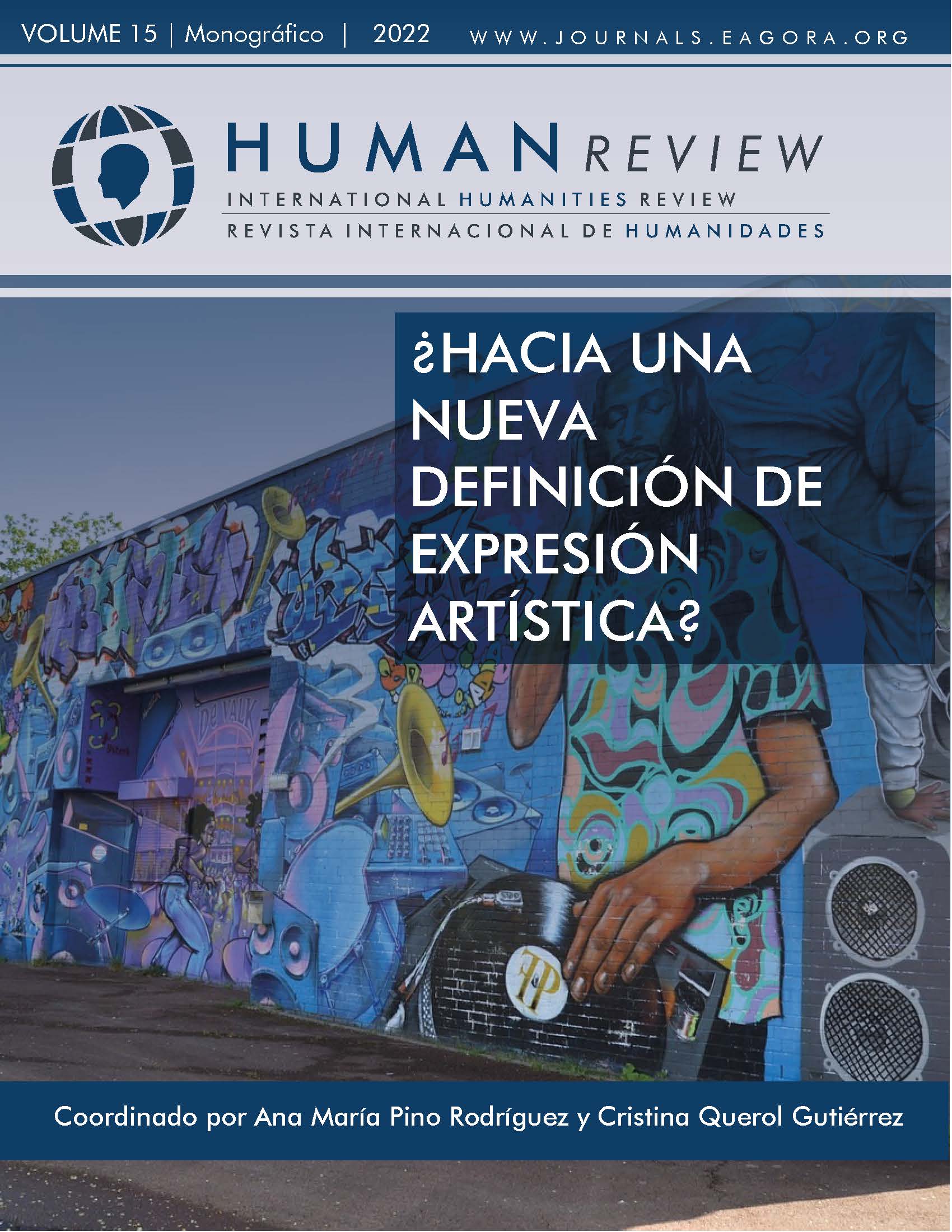La literatura digital en la Literatura Inglesa
DOI:
https://doi.org/10.37467/revhuman.v11.4333Palabras clave:
Literatura electrónica, Literatura digital, E-poesía, Lectura, Mujer, Estudios InglesesResumen
El presente artículo presenta una propuesta para enseñar literatura digital a los estudiantes de Estudios ingleses. En ella primero se introduce qué es la literatura digital, sus principales características, objetivos y géneros. En segundo lugar, ofrece ejemplo de escritoras y su importancia en el desarrollo de esta escritura. En tercer lugar, se les muestra dos obras digitales escritas por mujeres que puede formar parte de las lecturas obligatorias del curso. Este trabajo ahonda en los dos ejemplos presentados mediante una introducción y una lectura detenida.
Citas
Aarseth, E. J. (1997). Cibertext. Perpectives on Ergodic Literature. The Johns Hopkins University Press.
Borràs, L.; Memmott, T.; Raley, R. & Stefans, B.K. (2011). The Electronic Literature Collection. Vol. 2. collection.eliterature.org/ 2/.
Berens, K. I.; Murray, J. T.; Skains, L.; Torres, R., & Zamora, M. (2022). Electronic Literature Collection. Vol. 4. https://collection.eliterature.org/4/.
Bolter, J. D. & Grusin, R. (1999). Remediation. Understanding New Media. MIT Press.
Boluk, S.; Salter, A.; Garbe, J.; & Flores, L. (2016). Electronic Literature Collection. Vol. 3. https://collection.eliterature.org/3/.
Ciccoricco, D. & Large, D. (2019). Caution, Simulation Ahead. Complexity and Digital Narrativity. In Grishakova, A. & Poulaki, M. Narrative Complexity. (pp. 56- 72). University of Nebraska Press.
Chetcuty, C. (2016). Samantha Gorman, Danny Cannizzaro: Pry. CounterText, Volume 2, Issue 2, Page 256-263, https://www.euppublishing.com/doi/full/10.3366/count.2016.0055.
De Gregorio Robledo, Y. (2012). Aproximación a Fitting the Pattern de Christine Wilks. In Ferrer, A., & Chico-Rico, F. Cibercultura i comparatisme. Ciberliteratura y comparatismo. Universidad de Alicante-SELGYC [Sociedad Española de Literatura General y Comparada], pp. 75-82.
De Gregorio Robledo, Y (2019). Analysing E-lit as Work of Literature: Is it Possible?. Journal of Comparative Literature and Aesthetics, vol. 42, pp. 109-115.
Di Rosario, G., Meza, N., & Grimaldi, K. (2021) The Origins of Electronic Literature: An Overview. In J. O’Sullivan. Electronic Literature as Digital Humanities: Contexts, Forms, & Practices. (pp.9-26). Bloomsbury Academic.
Hayles, N. K. (21 March, 2008). Electronic Literature. New Horizons for the Literary. Notre Dame Press.
Hayles, N. K., Montfort, N., Rettberg, S. & Strickland, S. eds. (2006). Electronic Literature Collection Volume One [online]. Electronic Literature Organization, collection.eliterature.org/1/index.html.
Jenkins, H. (2007). Transmedia Storytelling 101. Confessions of an Aca-Fan. http://henryjenkins.org/blog/2007/03/transmedia_storytelling_101.html.
Pressman, J. (2018) The Novel in the Digital Age. In Bulson, E. The Cambridge Companion to the Novel. (pp. 262-267). Cambridge University Press.
Rettberg, S. (2019). Electronic Literature. Polity Press.
Roig-Marín, A; and Prieto, S. (2021). English Literature Students’ Perspectives on Digital Resources in a Spanish University.The Journal of Academic Librarianship. Vol. 47. Issue 6. https://doi.org/10.1016/j.acalib.2021.102461.
Wilks, C. (2013). Repurposing and Fitting the Pattern. In Mencía, M., & Husárová, Z. Enter+: Creative manual for repurposing in electronic literature. (pp. 36–41). Dive Buki.
Willis, H. (2016). Fast Forward: The Future(s) of the Cinematic Arts. Wallflower Press.
Descargas
Publicado
Cómo citar
Número
Sección
Licencia
Aquellos autores/as que publiquen con esta revista, aceptan los términos siguientes:
- Los autores/as conservarán los derechos morales sobre la obra y cederán a la revista los derechos comerciales.
- Transcurrido 1 año desde su publicación, la versión del editor pasará a estar en acceso abierto en la web de la editorial, pero la revista mantendrá el copyright de la obra.
- En el caso de que los autores deseen asignar una licencia abierta Creative Commons (CC), podrán solicitarla escribiendo a publishing@eagora.org.








